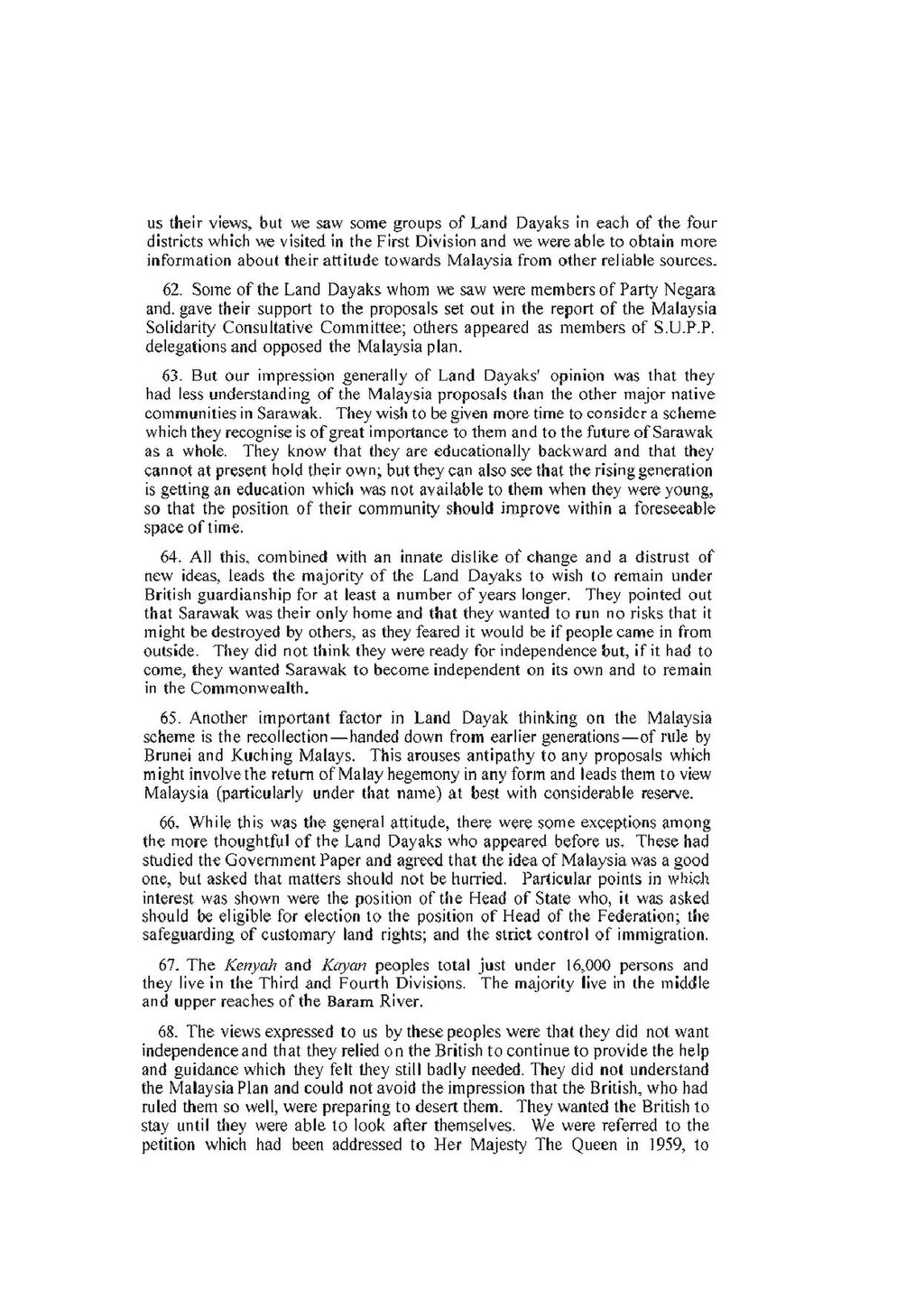us their views, but we saw some groups of Land Dayaks in each of the four districts which we visited in the First Division and we were able to obtain more information about their attitude towards Malaysia from other reliable sources.
62. Some of the Land Dayaks whom we saw were members of Party Negara and. gave their support to the proposals set out in the report of the Malaysia Solidarity Consultative Committee; others appeared as members of S.U.P.P. delegations and opposed the Malaysia plan.
63. But our impression generally of Land Dayaks' opinion was that they had less understanding of the Malaysia proposals than the other major native communities in Sarawak. They wish to be given more time to consider a scheme which they recognise is of great importance to them and to the future of Sarawak as a whole. They know that they are educationally backward and that they cannot at present hold their own, but they can also see that the rising generation is getting an education which was not available to them when they were young, so that the position of their community should improve within a foreseeable space of time.
64. All this, combined with an innate dislike of change and a distrust of new ideas, leads the majority of the Land Dayaks to wish to remain under British guardianship for at least a number of years longer. They pointed out that Sarawak was their only home and that they wanted to run no risks that it might be destroyed by others, as they feared it would be if people came in from outside. They did not think they were ready for independence but, if it had to come, they wanted Sarawak to become independent on its own and to remain in the Commonwealth.
65. Another important factor in Land Dayak thinking on the Malaysia scheme is the recollection—handed down from earlier generations of rule by Brunei and Kuching Malays. This arouses antipathy to any proposals which might involve the return of Malay hegemony in any form and leads them to view Malaysia (particularly under that name) at best with considerable reserve.
66. While this was the general attitude, there were some exceptions among the more thoughtful of the Land Dayaks who appeared before us. These had studied the Government Paper and agreed that the idea of Malaysia was a good one, but asked that matters should not be hurried. Particular points in which interest was shown were the position of the Head of State who, it was asked should be eligible for election to the position of Head of the Federation; the safeguarding of customary land rights; and the strict control of immigration.
67. The Kenyah and Kayan peoples total just under 16,000 persons and they live in the Third and Fourth Divisions. The majority live in the middle and upper reaches of the Baram River.
68. The views expressed to us by these peoples were that they did not want independence and that they relied on the British to continue to provide the help and guidance which they felt they still badly needed. They did not understand the Malaysia Plan and could not avoid the impression that the British, who had ruled them so well, were preparing to desert them. They wanted the British to stay until they were able to look after themselves. We were referred to the petition which had been addressed to Her Majesty The Queen in 1959, to
